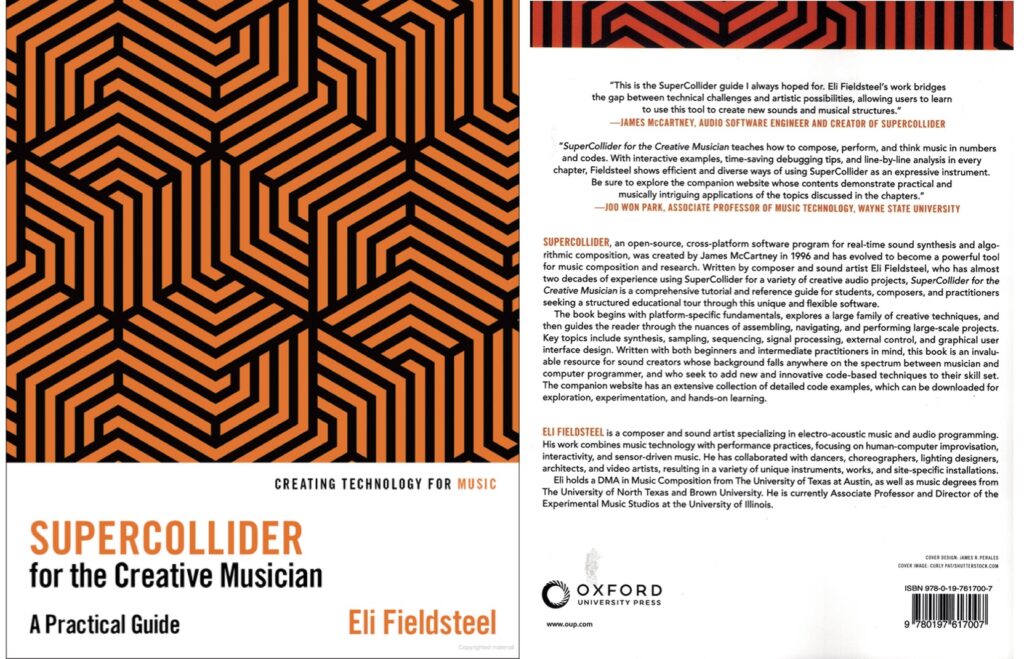I wrote a book endorsement for SuperCollider for the Creative Musician by Eli Fieldsteel.
“SuperCollider for the Creative Musician teaches how to compose, perform, and think music in numbers and codes. With interactive examples, time-saving debugging tips, and line-by-line analysis in every chapter, Fieldsteel shows efficient and diverse ways of using SuperCollider as an expressive instrument. Be sure to explore the Companion Code, as its contents demonstrate practical and musically intriguing applications of the topics discussed in the chapters.“

The endorsement had a word count limit. This book deserves a more detailed review. I agree with Fieldsteel’s statement in the Introduction that the book is a “tutorial and reference guide for anyone wanting to create electronic music or experimental sound art with SuperCollider.” Musicians, media artists, and programmers will learn the fundamentals and practical applications of SuperCollider by reading the book from cover to cover. I especially recommend this book to musicians seeking the connection between creative coding and their artistic practice. Electronic musicians learn to express musical ideas in numbers and symbols when they code music. Coding trains users to think of music differently as a result, and the author does an excellent job of teaching how to do so.
Fieldsteel’s expertise in composing, performing, and teaching SuperCollider for over a decade is evident in every chapter. The author correctly anticipates common beginner challenges and provides the most efficient solutions. I love Tip.rand sections dedicated to troubleshooting and debugging. They are essential in increasing productivity and decreasing the frustration of learning a new environment. The book’s biggest strength, as demonstrated in Tip.rand, is its accessibility. The language, style, and examples do not assume that the readers have previous programming, music synthesis, or audio engineering experience. Included figures, tables, and example codes are also effective and pedagogical. I was happy to see that the printed codes’ font is identical to the default font of SuperCollider IDE. It reconfirms the author’s effort in creating inviting chapters to learn a language with a considerable learning curve.
I spend the first month of my SuperCollider class helping students overcome the initial steep learning curve. The book will dramatically reduce the time and frustration of going over that hump. I don’t think other existing SuperCollider resources will help as much as Fieldsteel’s book for that purpose.
